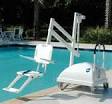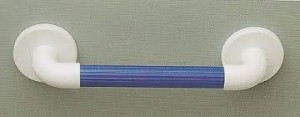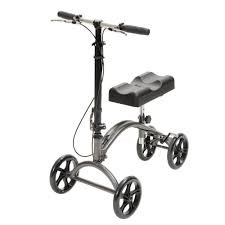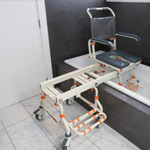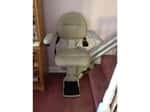Mobility experts explain the differences between ramps and vertical platform lifts, which comes down to differences in convenience, configurations, cohesion, complexities, consumer-friendliness, costs, and curb appeal. Lifts win hands-down in most categories.
When it comes to access, mobility devices are life-changing. First of all, ramps can allow for autonomy throughout homes and businesses, while lifts can provide new access to consumers with physical limitations. Ramps and lifts- which is right for you?
Mobility experts explain the differences between ramps and vertical platform lifts:
Nearly seven million people in this country rely on some type of mobility device or aid for everyday living. It is estimated that around one-and-a-half million of these individuals are wheelchair-users. When using a wheelchair or scooter, often ramps are too big or too steep, while lifts may be impractical or more-costly; before making your choice between ramps and lifts, consider some the inherent features of each.
Compare and contrast- which mobility solution is best for you?
Convenience
Perhaps convenience is the biggest factor to consider when buying mobility aids, like ramps and lifts; after all, it is doesn’t add ease to daily living, why bother at all? It is important to mention that lifts are not limited to those in wheelchairs and could be more pragmatic than you think. Lifts are used by a diverse and group of consumers, including those with wheelchairs or scooters which comprises around 1.7 million Americans.
Configuration
The placement and configuration of your mobility aid can also point toward whether lifts or ramps make more sense. When you are looking to improve access outside, such as to a porch or raised space, a ramp may seem like the logical solution. The truth is that in many instances, the ramp is not practical as the rise of the step is too high, making ramps too steep. Lifts can increase access to decks, floors, and other sections of your space without this conundrum. Also, both options present distinct challenges in homes of communal areas. Pay heed to lift safety pertaining to children and pets.
Consumer-friendly
Another point to consider is how consumer-friendly lifts and ramps actually are. Ramps are stationary, requiring no real consumer effort seemingly, but is it for someone in a wheelchair with limited hand or wrist mobility? Lifts provide a better option for those living with disabilities that may not use a wheelchair, such as arthritis, heart issues, or respiratory illness. Also, portable lifts are a practical option when trying to adapt and improve accessibility at a function or event. Portable ramps are available, but often less satisfactory for a diverse group of users with different and distinct limitations.
Complexities
Among the complexities that further blur the choice between ramps and lifts involves installation. If you are dealing with a low-rise, a ramp can be ideal, serving as a rise to around 18-inches high. Know that to accommodate this ramp, you will need a lot of space. Lifts tend to be more conservative space-wise, only needing around one-third of the area required by a ramp. A downside to implementing lifts is that it doesn’t always facilitate visitors with goods, stock, or freight, while ramps usually do.
Costs
Many caregivers and consumers buy ramps, thinking it is the obvious, low-cost option, but this is not necessarily the most cost-effective approach. Depending on if you are buying for the home or workplace, your lift could pay-off over time in utility and ease, while ramps may be more pragmatic when deliveries, freight, or handcarts are involved. When figuring out costs of ramps versus lifts, take into account all these factors to find solutions that may vary in their bottom-line, but that will save you money, time, and effort in the long-run.
Curb appeal
Think about how the ramp or lift will meld into the environment that you are installing these amenities in. If your building is historic or high-end, you may prefer the sleek and subtle look of a lift over a bulkier ramp. This discreet style also may appeal to more users, and its sleek style and design may be preferred in contemporary, industrial, and modern settings.
Talk to the experts for the mobility solution that is best for you
Ramps versus lifts? The answer depends on who you ask! However, it would seem that consumers have more options and wider-access to mobility aids of all types that can change everyday living and improve the overall quality of life forever. Talk to your providers and- when you are ready- consider the benefits of both ramps and lifts in your space.
Buy mobility aids from vendors that care enough to assess your needs thoroughly and offer support as you adapt to your acquisition. Whether you invest in ramps or lifts, make sure that the seller stands behind their product- from installation to repairs- and that will be available to you as needs change and questions arise.
President, Husband, Father, Grandfather Graduate of UC Davis- Bio Sci Major- Go Aggies! Jeff has extensive experience in all of Pacific Mobility’s products and services, and specializes in accessibility products as well as stairlifts, ceiling lifts and custom wheel chairs. His hobbies include spending time with family, gardening, mountain biking, exercising and off road motorcycle riding.
24 years as Owner/President of Pacific Mobility Center – selling, installing, and servicing stairlifts, porch lifts, ceiling lifts, pool lifts, handicap ramping, specialty wheelchairs, scooters, power wheel chairs, and other power mobility devices
Certified Environmental Access Consultant since 2008
Licensed General Contractor since 1998
Certified Aging in Place Specialist since 2016
Board Member for Home Access Professionals
Member of Association of Members of the Accessibility Equipment Industry (AEMA)
